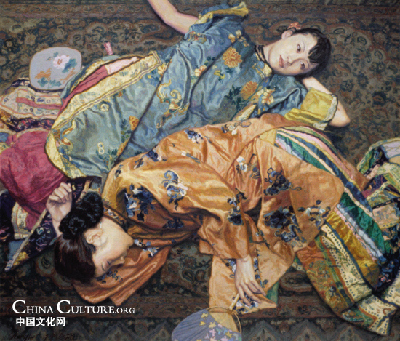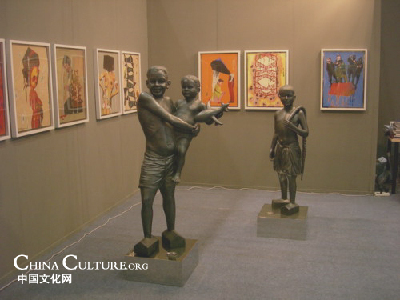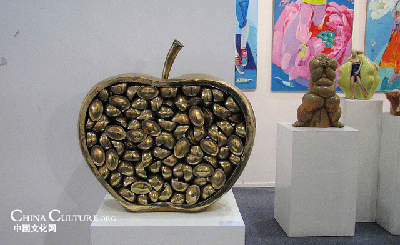Art fairs are not supermarkets!
It is a dream desire for many people to collect rare treasure. In recent years, along with rapid economic development, the art market is also rising, and various kinds of art fairs have quickly emerged, together with a too high, too hot and too fast market.
Amid such a climate some experts have angrily pointed out that, “Art Fairs are not supermarkets!” An art work can fulfill its commercial value in the market, but it is not the only value of the art.
China began its step into the world of art fairs quite late. In 1993, the first China Art Exposition was held by the ministry of China Culture at the China Export Commodities Fair Building in Guangzhou, which later developed into Guangzhou International Art Fair and China Art Fair, Beijing. The standardized art galleries in China then could be counted on just one hand.
 |
In recent years, the art market in China has grown by leaps and bounds and galleries gradually expanded so that professional modern art fairs came into being.
Today art fairs in China have a good tendency for specialization and internationalization, and many exhibition brands have earnt world wide reputations.
However, in such a hot art market, is it high prices or cool-headed academic thinking that leads the trend?
What is it that influences the taste and style of the art fair?
If the art fair concentrates on the sale price and total revenue, it will inevitably lead to the situation where “to sell what is hot.”
|
 |
In the next place, commercial art fairs must do their best to sell art works. The most famous Basel Art Fair is renowned for its high turnover and the number of art works featured. The manager of Basel art fair said that the measure of a successful art fair is how many paintings are sold. Though inelegant, it is true, because one art galley has to pay 100 thousand Swiss francs to exhibit their paintings in the Basel Art Fair. In this sense, no matter how strong the art gallery is, it can not survive without financial income in art fairs.
However, to judge an art fair’s success or failure only from economic benefit is not enough. Apart from market value pervaded by artists’ creation, there are also many social benefits of art fairs.
Unlike residents in western developed countries who often go to museums and art exhibitions to broaden the knowledge and artistic accomplishment, Chinese are weak on aesthetics and arts education. As such various art fairs that gather outstanding art work home or abroad, offer common residents in China a chance to learn schools of all kinds of styles, and to appreciate famous works from splendid artists.
 |
Last but not least, art fairs have regional comprehensive benefits. Basel once was a small town in Switzerland, though now has benefitted greatly from this. Every year 40 billon Euro is traded, and hundreds of thousands of people rush to fill up hotels in cities and towns around. During recent years, art fairs in big cities such as Beijing and Shanghai have also begun to show great regional comprehensive benefits with the increasing scale, atracting great importance from the government.
Art fairs should be seen as an important part of cultural industry and the exhibition economy, as a name card of the city while also showing the soft power of the region.


















